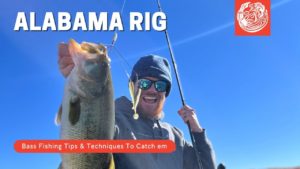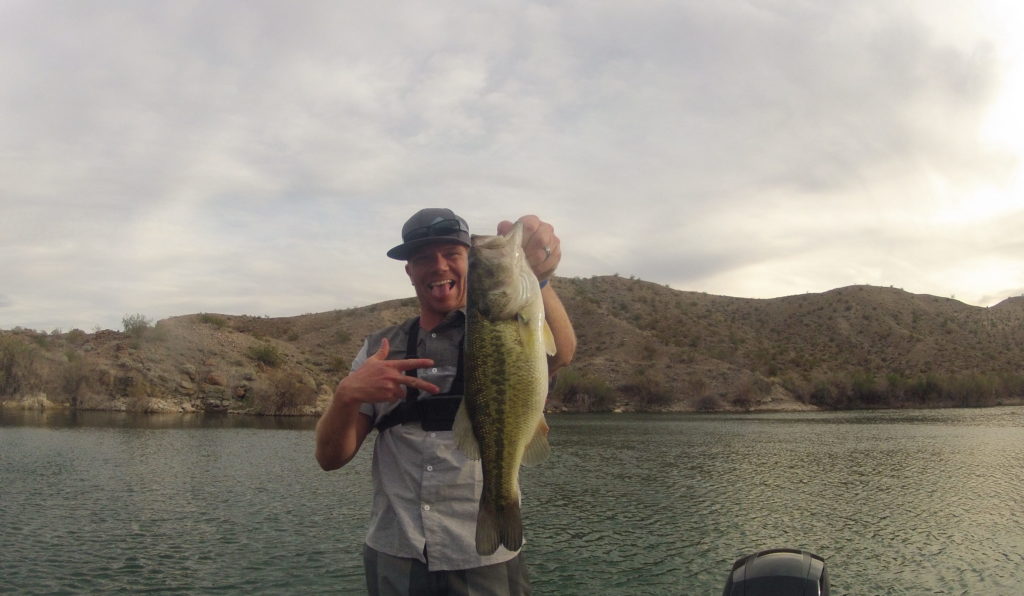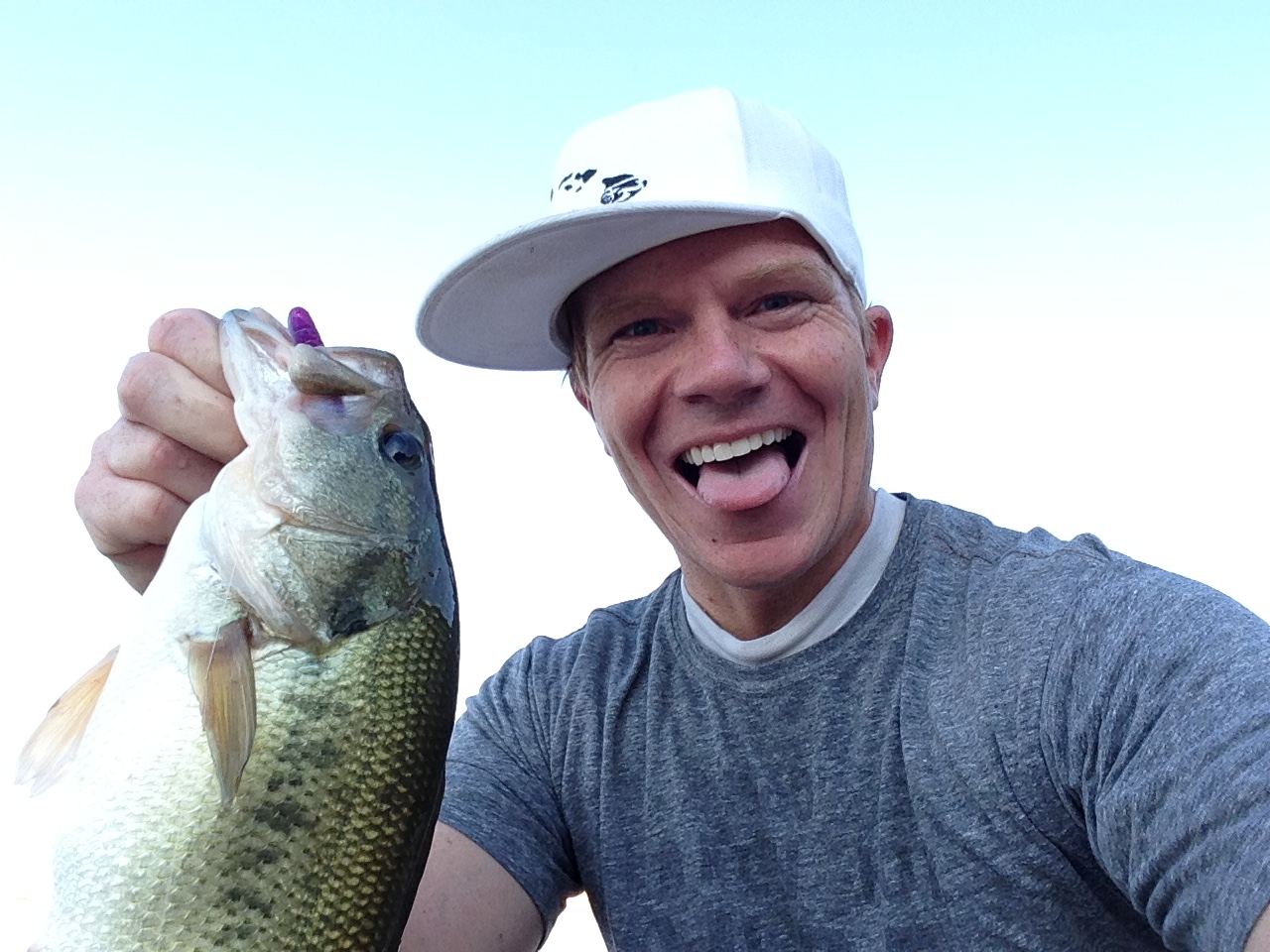



This post dives into helping you identify what baits to use depending on where bass are located. Water depth and the type of cover bass are holding on, is a major factor to consider for selecting your choice of techniques and baits when fishing. This guide for choosing baits according to how the fish are situated has really helped me out fishing. This is part four of the five part series of articles to help you know what to use bass fishing. Hopefully, it will help keep you “Kraken” bass as well no matter what you are faced with. Enjoy the post!
Knowing what to use when you get out on the water can be a real challenge. Understanding what depth you should be fishing, and the type of cover you are faced with, is a great way to eliminate options and focus on the best presentations. Along with whats been discussed from the previous posts on Seasonal Bass Behavior, Water Temperature, and Water Clarity this post will elevate your ability to choose the right baits and techniques. All four of these elements you observe while fishing are vital ingredients in knowing what to use when bass fishing.
Here we will break down the different types of cover you may be faced with, and what baits and techniques to use in each situation. Predators like a bass love to lie in hiding and come out to pounce on their prey. What cover a bass is holding is often a key piece to know what to use bass fishing when selecting a good bait or technique to catch them. Common types of cover bass relate too are things like wood or brush, grass or vegetation, and rock or rip rap. Here is a list of some good options when presented with these three common types of cover.
Wood type cover holds bass. My definition of wood style cover is anything like brush, stumps, or freshly flooded cover along the banks. Certain baits definitely work better than others when you find bass relating to wood on the body of water you fish. A good weedless bait is a solid choice to bump, bang, and crawl around wood. Typically, texas rigged soft plastics are a solid choice in this type of cover. Another good option would be a jig with a craw chunk. If you want to move faster and not spend the day retrieving lures use a spinnerbait, or chatterbait. If the wood isn’t too scraggly, you will be amazed at how well a square bill crankbait can move through cover without getting hung. Try any of these when fishing around wood.
Bass love grass and vegetation. You can always find them in or around the stuff. Grass is easy to pick up on your baits though. There are a lot of things out there to help keep you from snagging grass on your bait. Any little bit of grass on your bait can prevent a bass from hammering it. A drop shot rig and a shaky head are two of my favorite set ups for fishing in grass. The drop shot rig will keep your soft plastic worm or bait up out of the vegetation to entice strikes. The shaky head is great because it has a nice slim profile to slide through grass and vegetation. Another great option is a swimbait. A swimbait ripped through the grass, or swum slowly along the edges of vegetation can produce some solid fish.
Rocks provide great ambush points for bass, and provide shade and heat when the sun pounds on them. For this reason bass love hanging around them. Smallmouth especially seem to love those big bouldering mounds of rock. In the desert lakes I frequent rock is something that can take a little patience to fish, but can produce some good bags of bass. Banging crankbaits off the bottom, and cranking soft plastics is a great way to draw strikes from the rocks. Football jigs, and once again shaky heads are great for this type of cover. If you are hanging up, lighten your weights up and you should be good to crawl. Most creatures crawl along the base of the rocks for hiding and feeding, so presentations that are close to the bottom are often the best in this type of cover.

You absolutely must use baits and techniques that will reach the bass at the depth they are holding. What depth the bass are holding at is a paramount factor to know what to use bass fishing. To get to the appropriate depth all baits and techniques do not perform the same. For example, lures like a crankbait are labelled to help you identify what depths they will dive, so you can pick the right ones for your situation. In deep water remember to use heavier weighted objects. They tend to fish better. Whereas, lighter objects tend to fish better in shallower water. Here’s some ideas of different set ups to use at various water depths.
Try using weightless texas rigged softplastic stick baits, squarebill crankbaits, chatterbaits, or lightly rigged swimbaits at the 0 – 5 ft depth range. It doesn’t take long for a bait to fall 5 feet, so use what feels best. Typically light stuff is just right to stay where you need to be to get bass to bite. Plus, topwaters can be a good way to get a shallow fish to bite. Using 1/8 oz – 1/4 oz is often a good starting point at this depth zone of 0 – 5 ft.
Spinnerbaits, and medium diving crankbaits are a good choice at this level. Also, try things that suspend or hang between the surface and the bottom like a jerkbait, or a swim jig to stay at the right depth and get bites. A 1/4 oz – 3/8 oz is a good weight range for getting bites at this depth zone of 5 – 10ft.
Add a little more weight when you find bass 10 – 15 feet deep. Stuff like a 3/8 oz jig or adding more weight to your texas rigged softplastics is a good approach. Use slightly heavier items around the 3/8 oz. – 1/2 oz. mark for swimming swimbaits to keep in touch with your bass. A shaky head rig is also a great idea to get down fast, and catch a bass at these depths.
Your heaviest baits can work well when bass are 15 – 20 feet deep. Start using 1/2 oz – 3/4 oz sized baits and weights. Jigs or lipless crankbaits are good options to comb these depths. Big crank baits can dive this deep. Try throwing one if you see bass at this depth. Also, things like a drop shot rig can work really well to get down quick at this depth and stay in front of the bass.
Bass 20 feet or deeper require patience for your bait to get down on them. A carolina rig with a heavy weight is a solid choice to get down deep fast. Also, a heavier shaky head works well. Use big spinnerbaits up to an ounce and half, and heavy swimbait heads to get down deep. Another solid technique to use when bass are this deep are yo-yo style presentations with a jig or blade bait. Let your bait fall down to the bottom then rip it up, and let it fall back down again. This will often trigger reaction strikes for those deep water bass. Weights around 1 oz – 1.5 oz. are a good option to get this deep.
A paramount factor in deciding what to use is where the bass are holding in the water. Determining what cover they are holding in and at what depth, can help you pick the best baits to reach them. Hopefully, this guide of depth and cover will help you this season to pick the most optimum baits for getting bites and “Kraken” more bass.
Don’t forget to subscribe to the blog for more great content, and trip reports to help elevate your bass catching. Also, make sure to check out my hire me page, and let’s see if we can get a trip on the calendar for the year. I love getting out on the water, and helping others catch bass.
As Always,
Stay Stoked!
You need a system to know where to go, what to use and how to work your lures to catch more bass in every situation.
Use this lure color selection chart and perfectly match the color of your lure to what bass are wired to eat without trial and error so you can catch the monsters!
Discover how to perfectly match the color of your lure to what bass are wired to eat so you can catch the monsters!
This is how to entice bass to bite and catch bass on every fishing trip!
Discover how to perfectly match the color of your lure to what bass are wired to eat so you can catch the monsters!
One Response